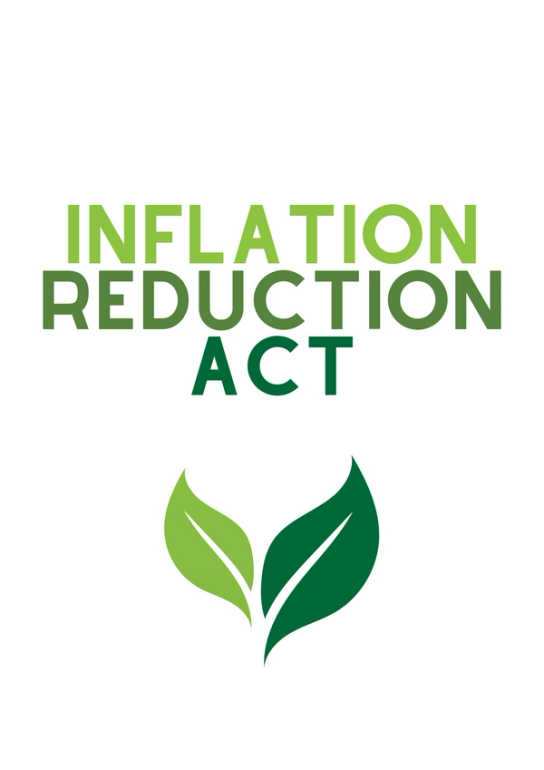The Inflation Reduction Act: A Case Study in Promoting Recycling Through Incentives
When it comes to crafting public policies to promote recycling, it is often assumed that government mandates are the way to go. According to this line of thinking, if governments require businesses to recycle end-of-life products or manufacture new products using a certain amount of recycled materials, then the rate of recycling will inevitably increase when entities are faced with financial or legal penalties for noncompliance. Many U.S. state and local governments have opted for mandates as a major pillar of their strategy for increasing recycling rates: as of 2020, 27 states and the District of Columbia had at least one mandatory recycling policy on the books. And, indeed, mandated recycling has had some positive results, as manufacturers in jurisdictions with recycled content requirements have increased the use of such materials in goods production.
But another school of thought argues that government incentives, rather than government mandates, are the best way to create a sustainable and robust market for recycled materials. Proponents of incentives argue that mandates may boost recycling rates in the short term, but in the longer term, they put a damper on innovation in recycling technology, distort the normal market forces that dictate both the supply and demand side of the market for recycled goods and materials, and raise costs for consumers and manufacturers. Government incentives, meanwhile, provide economic inducements that promote innovation in more efficient technologies to handle recyclable goods and materials, thereby raising the rate of recycling.
The challenge for the pro-incentive camp is that there are few examples of ambitious, large-scale incentive programs designed to promote recycling, especially at the federal level. All that changed, however, with the passage of the Inflation Reduction Act (IRA), which President Joe Biden signed into law in August 2022. As the IRA enters into force, the Act’s recycling incentives can serve as a prospective case study to evaluate the relative efficacy of incentives versus mandates for promoting recycling.
How the IRA Could Stimulate Recycling
The IRA includes several provisions that directly incentivize recycling.
- Section 48C of the Act expands an existing investment tax credit program to allow qualifying entities to write off up to 30 percent of their capital expenditures in facilities that recycle certain types of environmental technologies, including renewable energy generation equipment, carbon capture and sequestration equipment, and some types of electric, fuel cell, or hybrid vehicle equipment. These tax credits would also apply to expenditures in facilities to recycle or re-process critical minerals.
- Similarly, Section 45X of the Act creates a new advanced manufacturing production credit for certain types of components — including critical minerals and batteries — that are recycled within the United States.
- Additionally, Section 13401 of the IRA creates a tax credit — ranging up to $7,500 — for consumers who purchase an electric vehicle (EV) with a battery whose components were manufactured or assembled in North America. That includes batteries made from — or with components made from — materials recycled in North America. As manufacturers decide whether to make any changes to their supply chains to enable some or all of their electric vehicles to be eligible for the credit, one consideration may be how they can better leverage recycled batteries and what type of infrastructure may be needed to support that effort. Thus, while the EV tax credit does not directly incentivize recycling, it could nevertheless spur auto manufacturers to consider recycling as a means of enhancing eligibility, and to evaluate what additional infrastructure may be needed to scale such an effort, including in areas that go beyond the scope of the tax credit.
Measuring the impact of the IRA’s recycling incentives
Setting aside the benefits for U.S. manufacturing, how will policymakers know if the IRA’s incentives are in fact driving an uptick in recycling? Of course, it will take several years to have enough data to draw any firm conclusions about the efficacy of the IRA’s incentives. But in the meantime, policymakers can look to several metrics to judge its short-term impact. For instance, they can solicit data from automakers showing how many EV batteries are in their second or even third use, and they can measure the volume of recycled content that producers are using to manufacture new batteries. At the industry level, industry groups can collect data on the number of entities that are increasing their capital investment in recycling processes and the total capital investment that companies are making in new recycling facilities under section 48C of the IRA. If these figures increase over time, policymakers will have strong proof that the IRA’s incentives are working as designed.
From a practical perspective, for now this system of incentives is preferable to a requirement that EV battery components include recycled materials. A mandate would likely place undue costs on recyclers and manufacturers, as they try to meet a set minimum requirements that may or not be achievable within the given timeframe. Instead, the incentive system is designed to stimulate demand for EVs with these components, allowing recyclers and manufacturers to invest more capital in developing the technologies that are needed to scale up critical material recycling both in the United States and across the globe.
Adina Renee Adler is the Deputy Executive Director of Silverado Policy Accelerator.
Pillar
Eco²Sec
